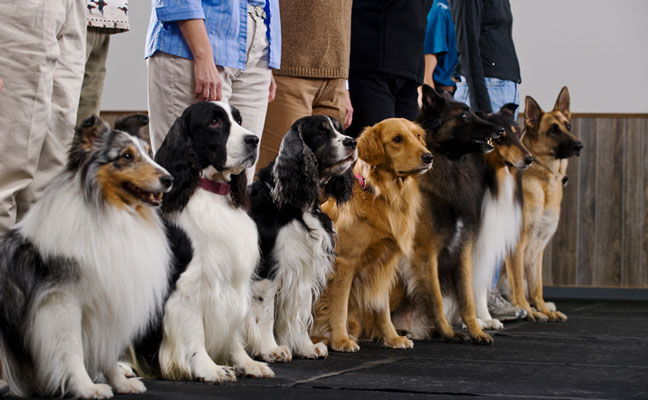
Photo: Apple Tree House/DigitalVision/Getty Images
I’m frequently asked whether I prefer a certain breed of dog for scent detection. My answer is always the same: No, not really. Breed choices are mostly arbitrary in my opinion and are usually based on the person’s preconceived and stereotypical notions about certain breeds of dogs. Beagles and Jack Russell terriers can find bombs and marijuana; and Belgian Malinois and other shepherds can find insects. A dog’s individual size, temperament and “drive” are more important than breed or coat coloring.
Not all dogs are appropriate for scent detection, regardless of the breed. Each dog must be evaluated individually to determine his or her suitability for a particular discipline of scent detection. In this blog series, I’ll explain a little about how my family and I have gone about choosing dogs over the years and what we look for in dogs. We do mostly look for smaller dogs for insect detection, but neither the breed nor the dog’s physical appearance are typically major considerations. Here are some of the basic things for which we evaluate candidates:
Sociability
Does the dog exhibit aggression toward or fear of other dogs or people when approached? Taking a well-trained dog and someone with dog experience with you when you conduct an evaluation allows you to focus on observing and will make this easier.
Anxiety
Does the dog exhibit tension or anxiety in response to noises, other dogs or animals, people, new sights or smells, etc.? Fears and anxiety are difficult for even professional trainers to deal with and are more so for new handlers.
Drive
The dog must be high drive, meaning that there must be something that the dog wants badly enough to work to obtain. I call this the W.I.I.F.M. principle – (What’s In It For Me?) The reward is usually a toy or a piece of food. Whatever the reward, the desire to obtain it must be strong enough to motivate the dog to work hard and ignore distractions. The two basic drive classifications are briefly discussed below.
Food drive
If you’re evaluating a dog for “food drive” you’ll need to determine if the dog will climb over things, crawl under things and scramble to find and eat a treat even in the face of some big distractions. (The specifics of testing for food and toy drive are covered later in this series).
Toy drive
Just as with the food-rewarded dog, the toy rewarded dog must be willing to climb, crawl and search diligently to find a concealed toy. If the dog quickly gives up the search, then it would likely do so when the real work begins.
Energy
To do this work, a dog must be energetic. If you’d like to know how difficult this work is for a dog, get on your hands and knees and sniff rapidly for about five minutes while crawling around on the floor. Then think about the dog doing that for 4 to 6 hours every day. Dogs that are too laid back don’t typically do well in scent detection. They may make great pets for someone who likes that kind of personality so don’t be too sad for the dogs you don’t take.
Age
We like to start dogs that are around six months to a year old. We try to stay away from dogs that are much over two years old unless they are exceptional candidates. Many younger dogs tend to have a problem focusing on the intense training exercises that are necessary for this work and people are reluctant to invest in a dog that is much over two years old.
Many of our pest detection dogs come from shelters, so in my next column, we’ll discuss how a typical trip to the shelter to evaluate a detector dog candidates might go.
Leave A Comment